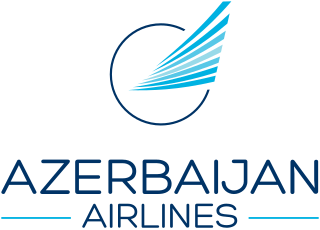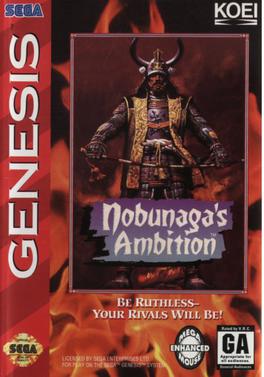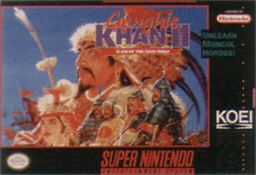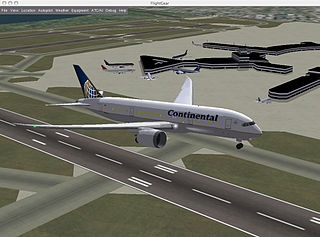
Trans World Airlines (TWA) was a major airline in the United States that operated from 1930 until it was acquired by American Airlines in 2001. It was formed as Transcontinental & Western Air to operate a route from New York City to Los Angeles via St. Louis, Kansas City, and other stops, with Ford Trimotors. With American, United, and Eastern, it was one of the "Big Four" domestic airlines in the United States formed by the Spoils Conference of 1930.

Koei Co., Ltd. was a Japanese video game publisher, developer, and distributor founded in 1978. The company is known for its historical simulation games based on the novel Romance of the Three Kingdoms, as well as simulation games based on pseudo-historical events.
Air Koryo is North Korea’s flag carrier and only commercial airline. It is state-owned and controlled by the North Korean air force. Headquartered in Sunan-guyŏk, Pyongyang, it operates domestic and international routes – on a regular schedule only to Beijing, Shenyang, and Vladivostok – from its hub at Pyongyang’s Sunan International Airport. It also operates flights on behalf of the North Korean government, with one of its aircraft serving as North Korean supreme leader Kim Jong Un's personal plane. Its fleet consists of Ilyushin and Tupolev aircraft from the Soviet Union and Russia, and Antonovs from Ukraine.

Aerobiz is a business simulation video game for the Super NES and Mega Drive/Genesis game consoles, released in 1992 by Koei. It was also released for the FM Towns, PC-9801 and X68000 computer platforms in Japan.
A virtual airline (VA) is a dedicated hobby organization that uses flight simulation to model the operations of an airline. Virtual airlines generally have a presence on the Internet, similar to a real airline. Many hundreds of virtual airlines of significance are currently active, with tens of thousands of participants involved at any one time.
Uncharted Waters is a Japanese video game series produced by Koei under its "Rekoeition" brand.

Azerbaijan Airlines, also known as AZAL, is the flag carrier and largest airline of the country of Azerbaijan. Based in Baku, adjacent to Heydar Aliyev International Airport, the carrier operates to destinations across Asia, the CIS, and Europe. Azerbaijan Airlines is a member of the International Air Transport Association.
A government simulation or political simulation is a game that attempts to simulate the government and politics of all or part of a nation. These games may include geopolitical situations, the creation of domestic political policies, or the simulation of political campaigns. They differ from the genre of classical wargames due to their discouragement or abstraction of military or action elements.

Nobunaga's Ambition is a series of turn-based grand strategy role-playing simulation video games. The original game was one of the first in its genre, being released in March 1983 by the Japanese video game developer Koei. Nobunaga's Ambition takes place during the Sengoku period of feudal Japan. The player is tasked with achieving the ultimate goal of warlord Oda Nobunaga: the conquest and unification of Japan. Selecting Oda Nobunaga is optional, however, as the player is also able to choose from a variety of other regional daimyōs of the time.

Naval Ops: Warship Gunner, released in Japan as Kurogane no Houkou 2: Warship Gunner is a vehicle simulation game released in 2003 for the PlayStation 2. It is an entry in the larger Kurogane no Houkou series, which also includes the games Naval Ops: Commander and Naval Ops: Warship Gunner 2.

Airline Tycoon is a business simulation game by Thomas Holz and Robert Kleinert, in which the player must successfully manage an airline. The original was developed by Spellbound Entertainment, and published by Infogrames Deutschland, but the succeeding versions were published by a variety of publishers.

Air Bucks is a business simulation game about running an airline. It involves purchasing landing rights for cities around the globe. In 1993 an enhanced version, Air Bucks v1.2, was released for the Amiga.

Genghis Khan II: Clan of the Gray Wolf, originally released as Aoki Ōkami to Shiroki Mejika: Genchou Hishi (蒼き狼と白き牝鹿・元朝秘史), is a 1992 video game developed by Koei. It is part of Koei's Historical Simulation Series of games, and is the sequel to Genghis Khan, though this is the third game in the series. Genghis Khan II was developed and published for MSX2, Nintendo Entertainment System, DOS, X68000, PC-9801, PC-8801, Mega Drive/Genesis, Super NES, Sega CD, PC Engine, and later PlayStation. The Super NES version was also made available on the Wii Virtual Console in North America on June 8, 2009 and in Japan on May 11, 2010.

Combat Flight Simulator 3: Battle for Europe (CFS3), is the latest installment of combat flight simulators from Microsoft Game Studios, released on October 24, 2002 in North America and on November 15, 2002 in Europe for the Microsoft Windows.
An otomegame is a story-based romance video game targeted towards women with a female protagonist as the player character. Generally one of the goals, besides the main story goal, is to develop a romantic relationship between the female main player character and one of the usually male, secondary lead characters.

A flight simulation video game refers to the simulation of various aspects of flight or the flight environment for purposes other than flight training or aircraft development. A significant community of simulation enthusiasts is supported by several commercial software packages, as well as commercial and homebuilt hardware. Open-source software that is used by the aerospace industry like FlightGear, whose flight dynamics engine (JSBSim) is used in a 2015 NASA benchmark to judge new simulation code to space industry standards, is also available for private use. A popular type of flight simulators video games are combat flight simulators, which simulate combat air operations from the pilot and crew's point of view. Combat flight simulation titles are more numerous than civilian flight simulators due to variety of subject matter available and market demand.

Pocket Planes is a business simulation video game developed by NimbleBit for iOS. It was initially released on 14 June 2012. In October 2012, the game became available on the Mac App Store. An Android version, ported and published by Mobage, was released on 22 September 2012. The game was removed on 24 September 2015 from the Google Play Store, however was re-released 17 March 2022. The game is still available on iOS App Store in selected regions. An update to the iOS version is also planned and will see the game available again in all countries.

Nobunaga's Ambition is a 1986 strategy game by Koei, focused in the Sengoku period of the history of Japan. A part of Koei's "Historical Simulation" line of titles, it was published on several platforms such as IBM PC compatibles, Amiga, the Nintendo Entertainment System, Super NES, and Mega-Drive. It is the second game in the Nobunaga's Ambition series and the first Nobunaga's Ambition title to be released in English. The player has the objective unifying Japan as Oda Nobunaga or as any of the other daimyos present in the game. Several revisions were made to the gameplay since the first game, as well as a 50-province mode which expanded the game's map to feature all of Japan.

The Boom Overture is a proposed supersonic airliner under development by Boom Technology. Its design will be capable of traveling Mach 1.7, with 64–80 passengers depending on configuration, and 4,250 nmi of range. The Overture is planned to be introduced in 2029. The company claims that with 500 viable routes, there could be a market for up to 1,000 supersonic airliners with fares similar to business class. The aircraft is planned to have a delta wing configuration, but will be built with composite materials. Following a redesign revealed in 2022, it is intended to be powered by four dry (non-afterburning) 35,000 lbf (160 kN) turbofans.
Airplane Mode is a 2020 simulation video game developed by Hosni Auji and Bacronym and published by AMC Games. It was released on October 15, 2020, for Windows and macOS. In the game, players control a plane passenger as they go on a flight that lasts multiple hours in real time. The player can watch movies and perform other tasks such as eating in-flight meals and drawing as they wait out the duration of the flight. The game received mixed reviews from critics.















